The two most frequent questions I get are; are foxes canine or feline, and are fishers cats or dogs? Fishers are weasels. Foxes look like dogs and act like cats, so the question of whether foxes are canine or feline gets asked for a good reason.
Related: What makes a fox scream at night?
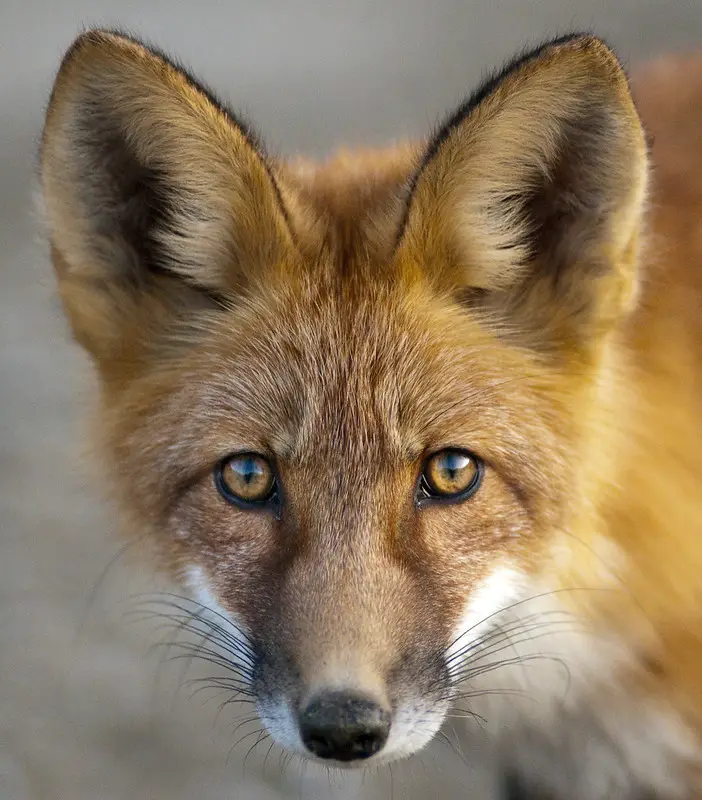
Are foxes canine or feline?
Foxes are small to medium-sized dog-like carnivores of the Canidae family. Foxes are arrhythmic opportunistic predators with the same vertically slit pupils as felines, allowing them to see during the day or night by regulating the amount of light entering their eyes.
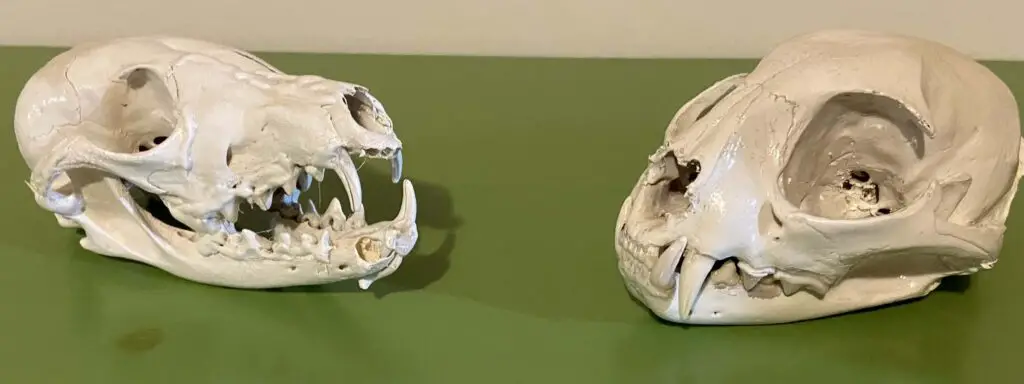
As you can see from the photo above, foxes have flattened skulls, large eye sockets with concave pits above them (small circular shadow in the picture), and long narrow snouts. Bobcats have even larger eye sockets and very short snouts.
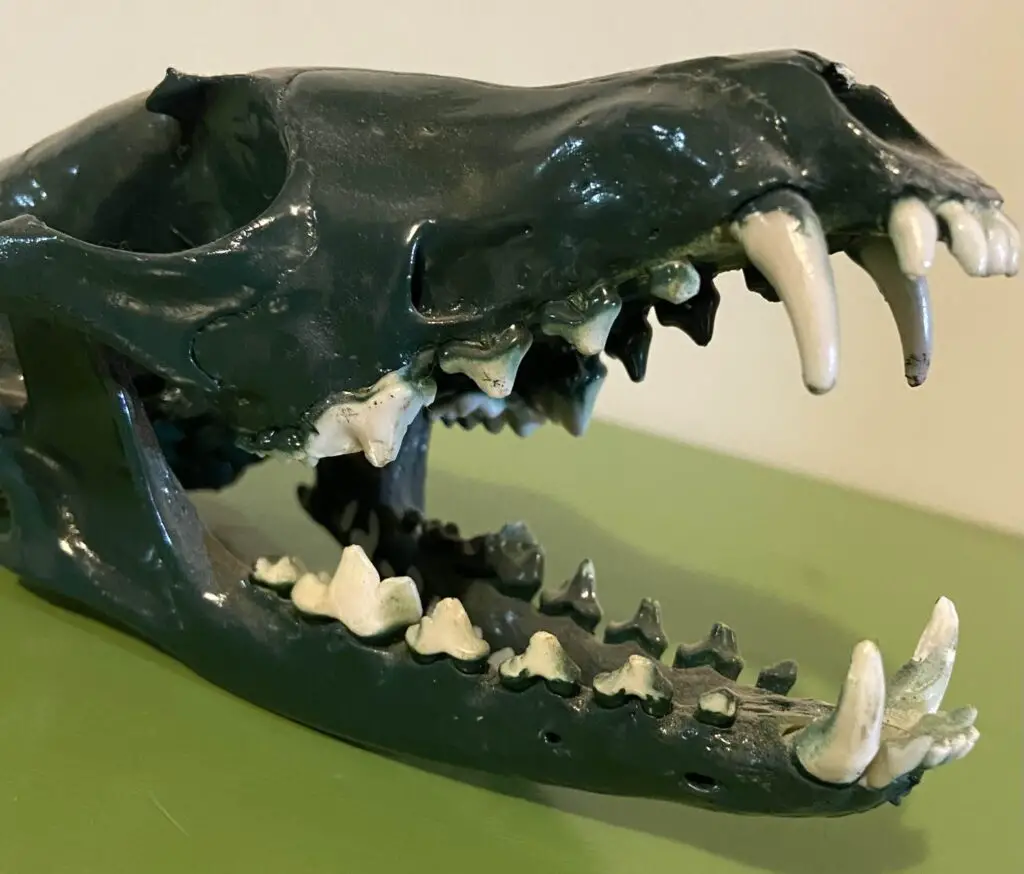
Fox canine teeth are slender and sharp. In the bobcat photo, you can see that while they, too, have canines, they only have four teeth behind them.
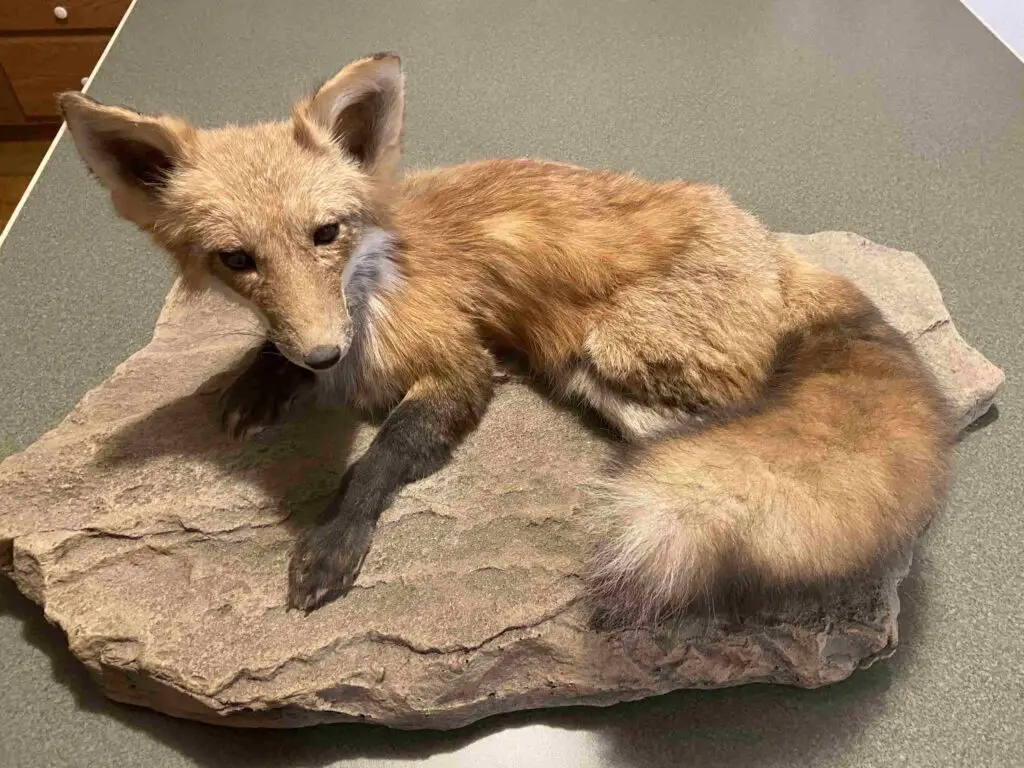
Note the fox’s erect, triangular, pointed ear, somewhat upturned muzzle, and thick bushy tail.
Related: Fox hunting laws by state.
Why is a fox canine and not feline?
When trying to answer the question are foxes canine or feline, we must first consult the dictionary. When we do, foxes are defined as canines, and canines are scientifically referred to as canids. Canids are defined by the elements pictured above; long legs, slender builds, bushy tails, long snouts, and canine teeth.
Felines are part of the Felidae family. They have retractable claws, powerful adroit forelimbs, and muscular, slender bodies.
Definitions fail us determining why foxes are canine and not feline. Let me show you why.
Related: How to kill a fox that is eating chickens.
Is a fox a cat or a dog?
For instructional purposes only, I will be using the red fox, the gray fox, and the bobcat to compare and contrast these animals and to answer the question of are foxes canine or feline.
A basic tenet in the dog vs. cat world is that cats have retractile claws and can climb trees. Obviously, no canine can do either of these, right?
Oopsie! I give you the gray fox.
Related: How to find a fox den.
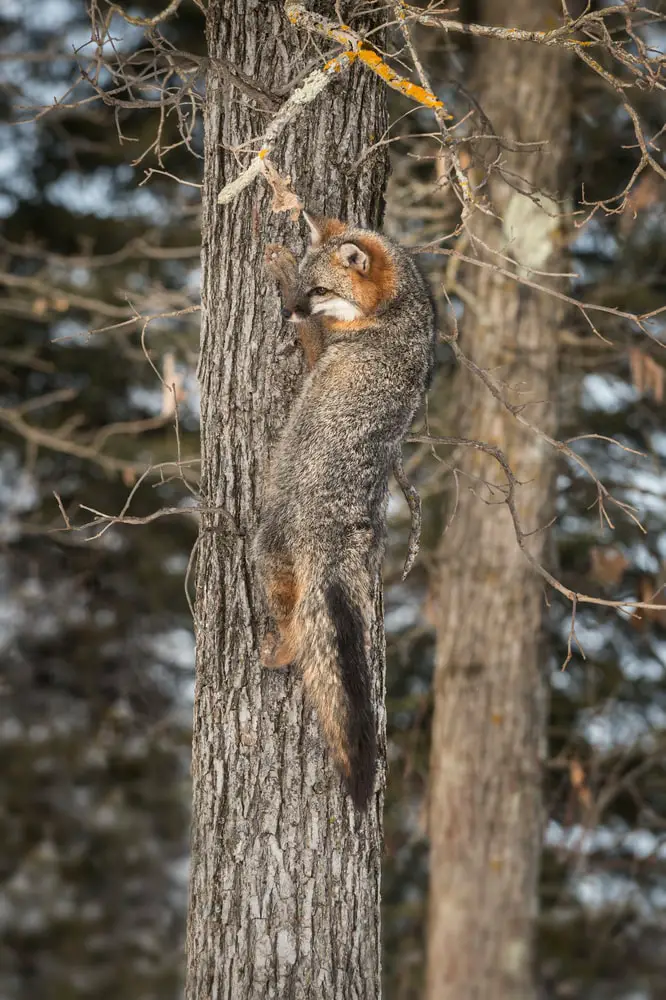
The gray fox has partially retractable claws and writes that rotate to climb and maneuver through tree limbs comfortably. Like cats, they can seek safety from predators by quickly scaling up a tree truncated. Like a squirrel, they can forage and even build dens in trees.
What the gray fox is terrible at is high-speed downward movement from trees. If predators get above them, they are in trouble and often injured during the descent phase of their escape.
Cats are digitigrade and dogs are not. Oh my, how often have we seen this mistake? So many websites say cats walk on their toes, and dogs do not. This simply isn’t true. Digitigrade movement is how predators increase the length of their legs to generate more speed and create less noise. Think of a coyote running past you versus a horse.
Cats are solitary ambush predators that stalk their prey. This is true, but it is also a shared hunting technique among foxes and coyotes—for the most part. Foxes usually travel and hunt alone, except during the mating season and while teaching kits how to hunt prey.
Related: How to identify fox tracks, prints, and poop.
Caching food: Canine fox and feline bobcats both do it.
Foxes and wild cats, like bobcats, do not chew their food. They use their canine teeth to tear off pieces large enough to swallow whole and store the remaining meat.
A bobcat that kills a deer will eat what it can and then quickly cover and mark the remains of the kill. After tearing it into small pieces, the fox will store the remainder in over a dozen four-inch deep, widely scattered, and camouflaged caches. Each hole will have just a few gulps of food in it.
Both foxes and bobcats mark, spray urine, on their food caches as a means of locating and marking their territory. While this seems like a quick way for other foxes or bobcats to discover and steal their hidden food, other foxes and bobcats will not cross these lines.
Are foxes canine or feline: The differences between them.
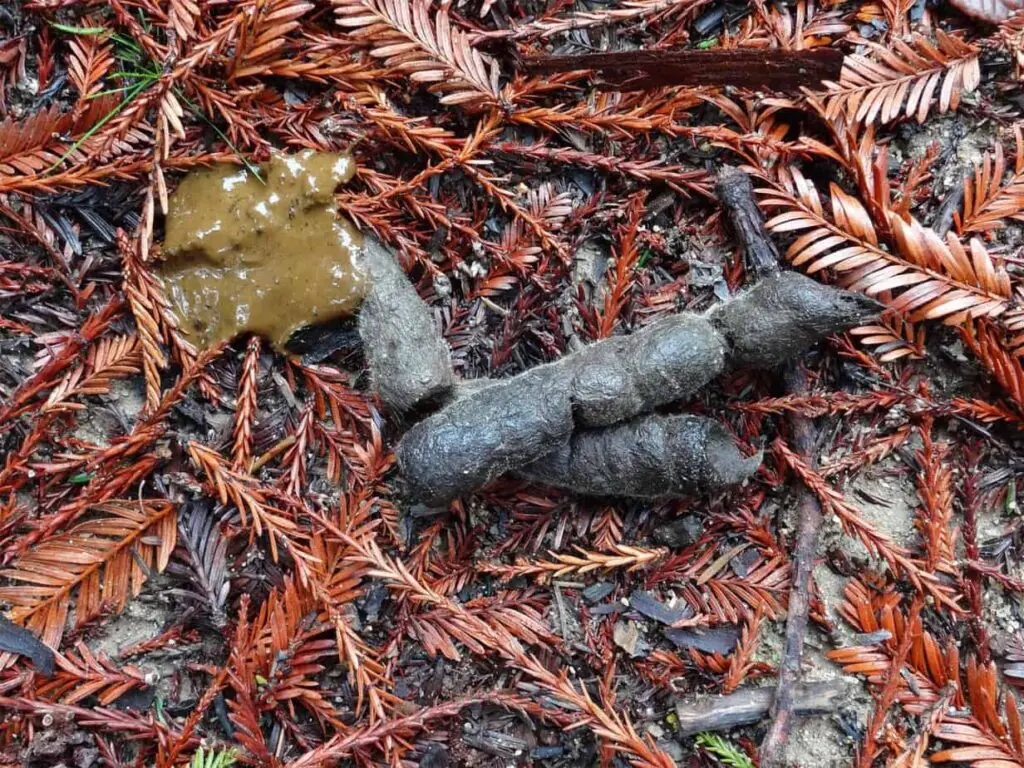
Bobcat scat.
Bobcat scat looks a lot like poop from a small dog at first. Averaging 4 inches in length and 1/2 inch diameter, it is colored brown or black and split into ends that are blunt on one end and sometimes tapered on the other. Bobcat scat may contain some bones and fur of smaller ungulates prey.
Male bobcats, however, like to mark trail intersections as territorial boundaries by defecating at the intersection and then scraping and urinating on the spot.
Bobcat scat with a urinated on scrape has a distinct “house cat” like odor.
Bobcats often attempt to hide their dung by covering it. Before defecating, they will scratch an area bare to defecate in, and then after pooping, kick sand over it.
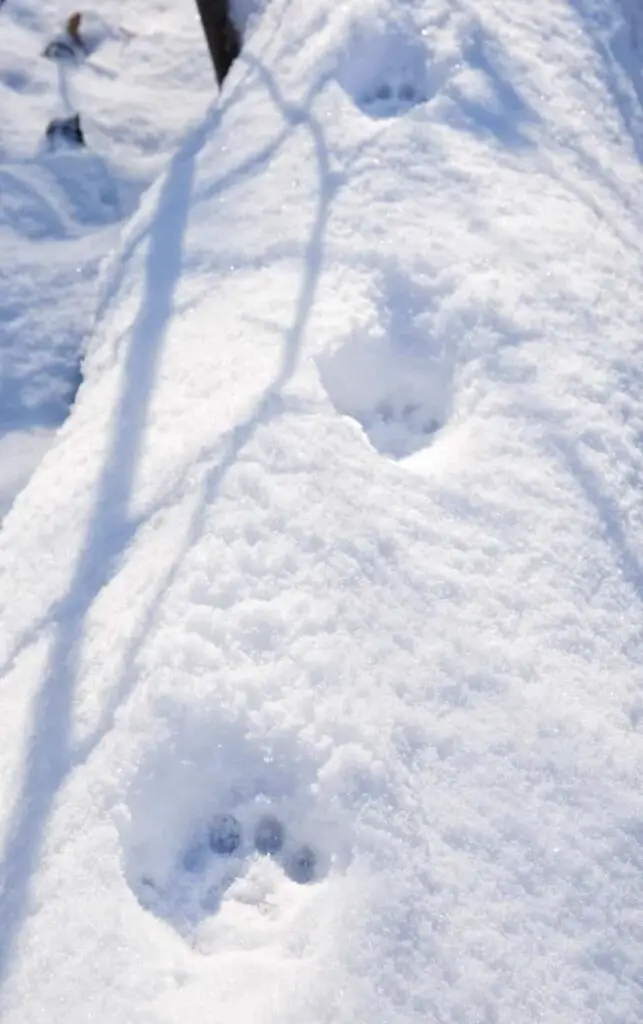
Bobcat tracks.
All canine tracks will have claw marks. However, bobcat prints will not because they keep their claws retracted while moving.
Canine prints are taller than they are wide, but bobcat prints are wider than they are tall.
The third difference is the C shape found in the negative space between the toe and heel pads of a bobcat track.
The last and most important difference that show that foxes are canine is canines have one lobe on the front of the heel pad and two on the rear. A bobcat’s heel pad has two lobes on the front and three on the rear.
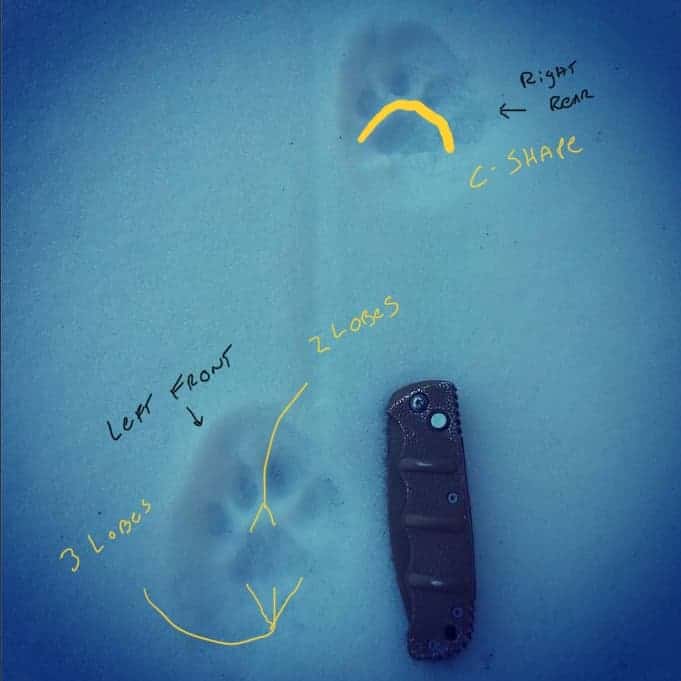
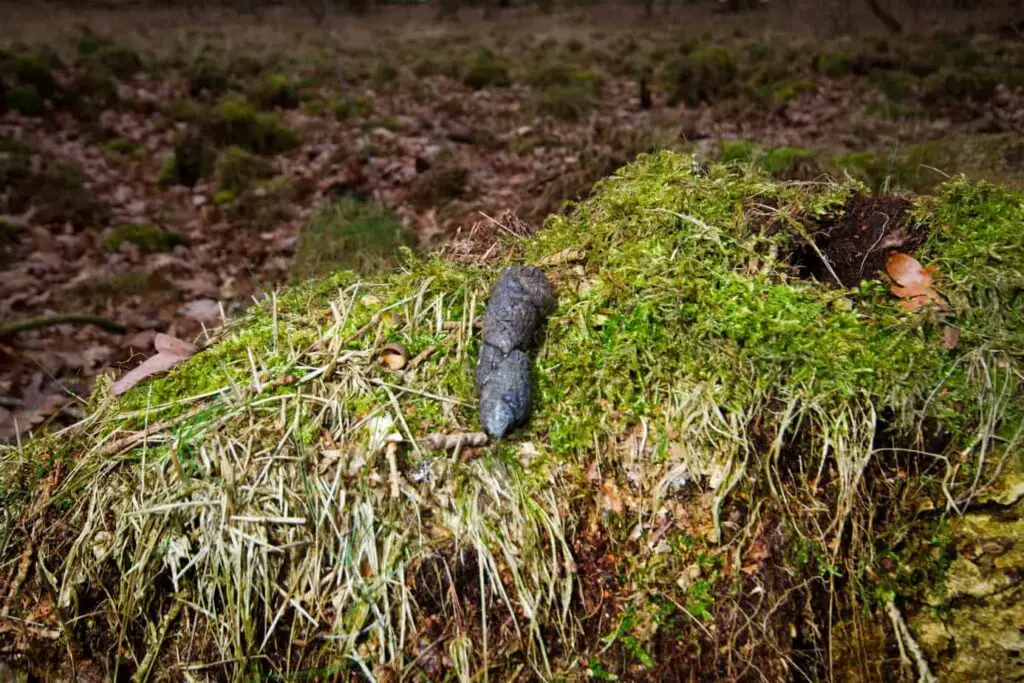
Fox poop size, shape, and color.
Fox poop averages two inches in length and a ½ inch in diameter. Often loaded with hair, undigested insect parts, and seeds from berries and fruits. Fox scat is pointed at both ends and has an unusual odor. I’d call it putrid.
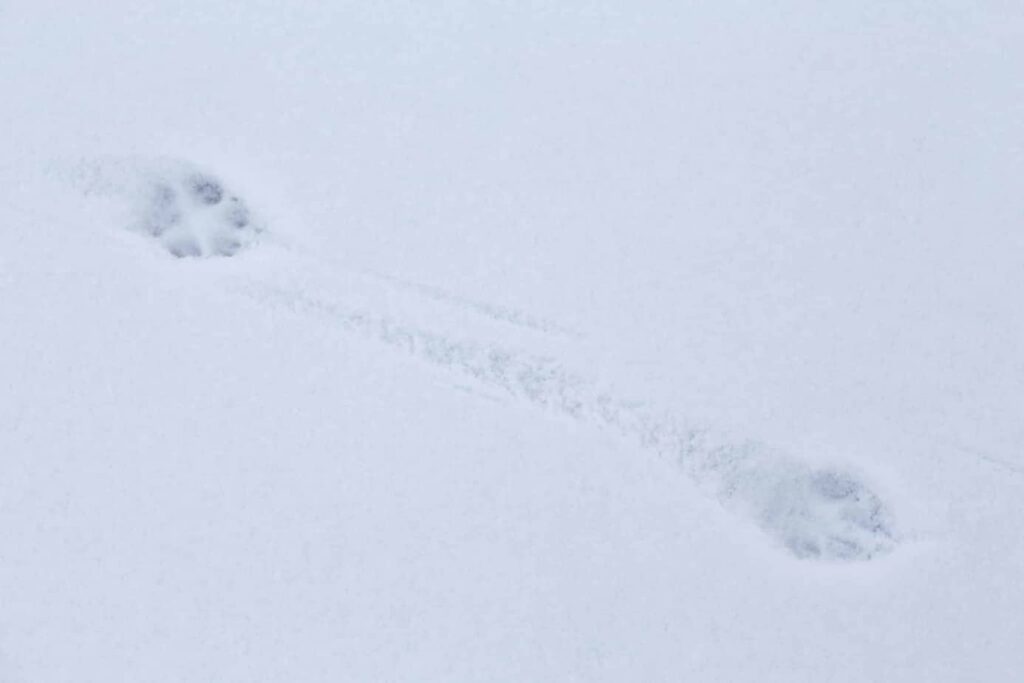
Fox tracks.
Fox paw prints are approximately 1.75 to 2.5 inches long by 1.5 to 2″ wide.

